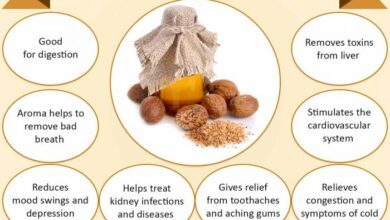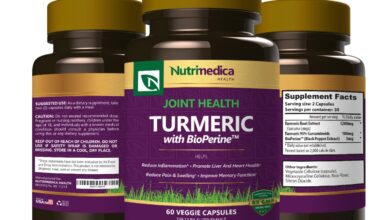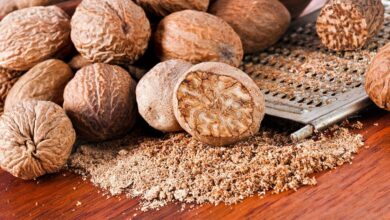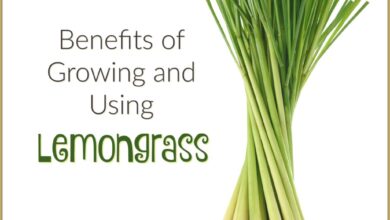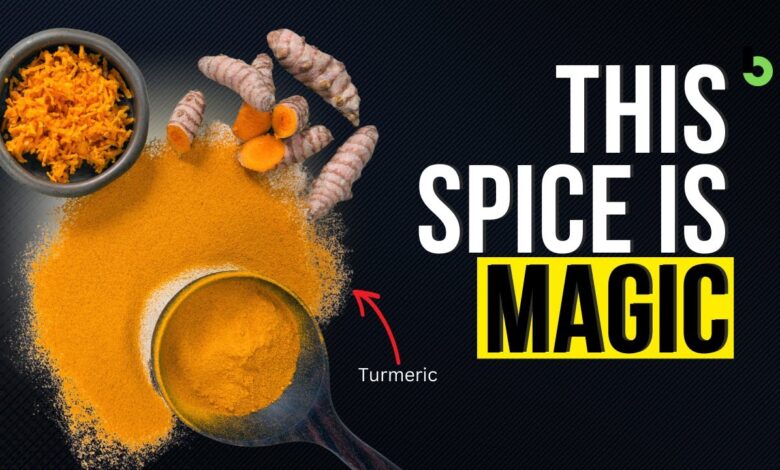
Simple Tips for Maximizing Turmerics Healing Properties
Simple Tips for Maximizing Turmeric’s Healing Properties delves into the world of turmeric, exploring its potent health benefits and providing practical strategies for harnessing its healing powers. We’ll uncover the science behind curcumin, discuss optimal preparation methods, and delve into the best ways to incorporate turmeric into your daily life. From simple recipes to understanding potential interactions with medications, this comprehensive guide will empower you to make informed decisions about using turmeric safely and effectively.
Turmeric, a vibrant spice with a rich history, boasts a remarkable array of potential health benefits. From its use in traditional medicine to its current popularity as a wellness supplement, turmeric’s versatility and potential make it a compelling subject for exploration. This article will guide you through the various aspects of turmeric, from understanding its composition to incorporating it into your lifestyle, while also highlighting potential safety concerns.
Introduction to Turmeric’s Healing Properties
Turmeric, a vibrant golden spice, has captivated culinary traditions and health enthusiasts for centuries. Beyond its delicious flavor, turmeric boasts a wealth of potential health benefits, primarily attributed to its active compound, curcumin. This article delves into the science behind turmeric’s healing properties, exploring its historical uses and offering practical guidance on safe and effective consumption.Turmeric’s remarkable health potential stems largely from its active constituent, curcumin.
Curcumin possesses potent antioxidant and anti-inflammatory properties. Research suggests it may play a role in protecting cells from damage, reducing inflammation throughout the body, and potentially supporting various bodily functions. While more research is needed to fully understand the intricate mechanisms, early findings are promising.
Historical and Cultural Uses
Turmeric has a rich history in various cultures, particularly in South Asia. For generations, it has been used in traditional medicine for its perceived healing properties, ranging from treating wounds to easing digestive issues. The spice is frequently used in Ayurvedic practices, where it’s valued for its ability to support overall well-being.
Turmeric’s Potential Health Benefits
Turmeric’s potential health benefits are multifaceted. Research suggests it might contribute to joint health, support healthy digestion, and even have a positive influence on cognitive function. However, it’s crucial to remember that these are potential benefits and further research is necessary to confirm these effects.
Looking for simple ways to boost turmeric’s amazing health benefits? Pairing it with other potent spices can amplify its effects. For example, exploring the remarkable health advantages of clove and black nutmeg, as detailed in Unlock the Secret Health Powers of Clove and Black Nutmeg , could be a game-changer. Ultimately, incorporating these simple tips can lead to a more effective and holistic approach to maximizing turmeric’s healing properties.
Curcumin: The Active Compound
Curcumin, the primary bioactive compound in turmeric, is responsible for many of its purported health benefits. It’s a potent antioxidant and anti-inflammatory agent. Studies suggest curcumin’s ability to modulate the immune response and protect against cell damage. Its ability to combat inflammation has made it a subject of significant interest in research on various health conditions.
Safe and Effective Consumption
While turmeric offers a range of potential health benefits, it’s essential to consume it safely and effectively. High doses of curcumin supplements might cause side effects such as nausea, gas, or diarrhea. Always consult with a healthcare professional before incorporating turmeric supplements into your routine, especially if you have pre-existing medical conditions or are taking other medications.
| Turmeric Benefit | Scientific Explanation | Possible Side Effects | Dosage Recommendations |
|---|---|---|---|
| Potential anti-inflammatory effects | Curcumin, a potent antioxidant, may reduce inflammation throughout the body by inhibiting certain inflammatory pathways. | Mild digestive upset, such as nausea or gas, may occur at high doses. | Consult a healthcare professional for appropriate dosage. Start with low doses and gradually increase if tolerated. |
| Potential antioxidant effects | Curcumin’s antioxidant properties help protect cells from damage caused by free radicals. | Rare cases of skin rash or allergic reactions have been reported, though they are generally mild. | Consult a healthcare professional to determine the most suitable dosage based on individual needs and health conditions. |
| Potential support for healthy digestion | Turmeric may stimulate digestive enzymes and improve nutrient absorption. | High doses may lead to mild digestive discomfort, such as bloating or diarrhea. | Begin with a low dose and gradually increase as tolerated. Food pairings and preparation methods can also influence absorption. |
| Potential support for joint health | Some studies suggest that curcumin might help reduce inflammation and pain associated with joint conditions. | Rare cases of liver problems have been reported in individuals with pre-existing liver conditions. | Consult with a healthcare professional for personalized dosage recommendations. |
Simple Preparation Methods for Maximum Curcumin Absorption: Simple Tips For Maximizing Turmeric’s Healing Properties
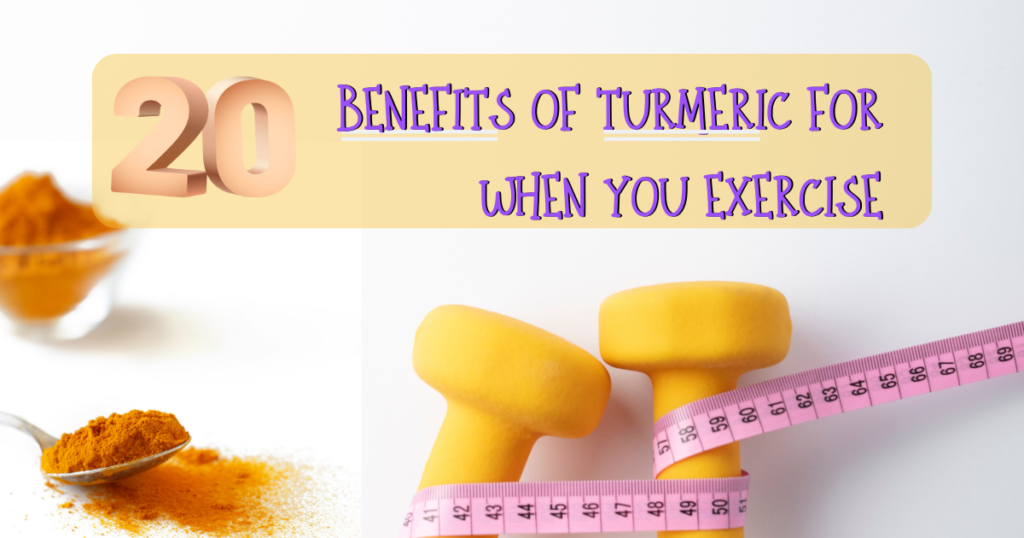
Source: tryitdietsisters.com
Turmeric, a vibrant spice brimming with health benefits, owes much of its power to curcumin, a potent polyphenol. Unfortunately, curcumin’s bioavailability – its ability to be absorbed and utilized by the body – can be low. This means that simply adding turmeric to your diet might not yield the full spectrum of its healing properties. Fortunately, careful preparation methods can significantly enhance curcumin absorption.
By understanding the interplay between cooking techniques and curcumin’s properties, we can unlock the full potential of this remarkable spice.Understanding how different cooking methods affect curcumin’s absorption is key to maximizing its benefits. Factors like temperature, time, and the presence of certain compounds influence the molecule’s stability and subsequent absorption. Different preparation methods offer varying levels of effectiveness in this regard.
Optimizing Cooking Methods for Curcumin Absorption
Various cooking methods affect curcumin bioavailability. Steaming, sautéing, and boiling, while all suitable for incorporating turmeric into dishes, differ in their impact on curcumin content. The optimal method depends on the desired outcome and the overall dish.
Impact of Temperature and Time on Curcumin Content
Cooking temperature and duration significantly influence curcumin content. High temperatures, while sometimes necessary, can lead to a decrease in curcumin concentration. Longer cooking times can also degrade the compound. Careful attention to these variables ensures that the beneficial properties of turmeric are preserved.
Comparison of Steaming, Sautéing, and Boiling Turmeric
Steaming turmeric tends to retain more of its curcumin content compared to boiling. Sautéing, while offering a quicker method, may also result in some curcumin loss. The optimal choice depends on the desired balance between speed and curcumin preservation. A quick sauté with a moderate temperature is often the best approach to keep curcumin content relatively high.
Maximizing Curcumin Absorption Through Food Pairings
Certain ingredients can enhance curcumin absorption. Black pepper, rich in piperine, a compound that increases curcumin absorption, is a frequent companion for turmeric in various cuisines. Pairing turmeric with healthy fats, such as those found in coconut oil or olive oil, can also improve curcumin’s bioavailability. This is because curcumin is a fat-soluble compound.
Curcumin Absorption Rate by Cooking Method
| Cooking Method | Curcumin Absorption Rate (Estimated) | Preparation Time (approx.) | Ingredients needed |
|---|---|---|---|
| Steaming | High | 5-10 minutes | Turmeric powder, water, optional herbs and spices |
| Sautéing | Moderate | 3-5 minutes | Turmeric powder, oil (e.g., coconut or olive), optional herbs and spices |
| Boiling | Low | 10-15 minutes | Turmeric powder, water, optional herbs and spices |
| Raw (in dishes) | Low | 0 minutes | Turmeric powder added directly to dishes |
Note: Absorption rates are estimations and can vary based on individual factors and specific preparation conditions. Adding black pepper and healthy fats generally improves curcumin absorption.
Optimal Turmeric Consumption for Health Benefits
Turmeric, with its vibrant golden hue and potent curcuminoids, has captured the attention of health enthusiasts worldwide. Beyond its culinary appeal, turmeric offers a wealth of potential health benefits. Understanding the optimal consumption strategies is key to maximizing its positive impact on your well-being. This section delves into the recommended daily intake, the importance of consistency, and practical ways to integrate turmeric into your daily routine.Proper turmeric consumption goes beyond simply adding a pinch to your curry.
Knowing the right amount and consistent intake is crucial for experiencing its full healing potential. By incorporating various preparation methods and recipes, you can easily enjoy turmeric’s benefits in a way that suits your preferences and lifestyle.
Recommended Daily Intake for Different Health Goals
Optimal turmeric intake varies based on individual needs and health goals. While no single daily dose is universally recommended, studies suggest that a daily intake of 500-1000 mg of curcuminoids is a common starting point for various health benefits. This range can be adjusted based on specific needs and under the guidance of a healthcare professional. For example, individuals seeking joint pain relief might benefit from a slightly higher intake, while those focused on general well-being might find a lower dose sufficient.
Importance of Consistency in Turmeric Consumption
The key to harnessing turmeric’s potential lies in consistent consumption. Similar to any dietary supplement or health practice, consistency is essential to experience noticeable improvements. Occasional use may not provide the sustained benefits that a regular regimen offers. Regular intake, ideally daily, supports the body’s ability to absorb and utilize the potent curcuminoids for optimal health effects.
Different Ways to Incorporate Turmeric into Your Diet
Turmeric can be seamlessly integrated into your daily meals through various methods. It can be added to your favorite dishes, incorporated into smoothies, or enjoyed as a warm beverage. The possibilities are endless, making it easy to find a method that fits your lifestyle and preferences. Experiment with different preparation methods to find the most appealing and effective way to enjoy turmeric’s benefits.
Turmeric-Infused Recipes for Different Meal Types
- Breakfast: Turmeric Smoothie: Blend 1 scoop of protein powder, 1/2 cup of spinach, 1/4 teaspoon of turmeric, 1/2 cup of almond milk, and a handful of ice. This vibrant smoothie provides a nutrient-rich start to your day, boosting energy and providing a dose of antioxidants.
- Lunch: Turmeric-Ginger Chicken Salad: Mix cooked chicken breast with chopped cucumber, bell peppers, and shredded carrots. Add a tablespoon of turmeric powder, a pinch of ginger, and a light vinaigrette. This salad offers a flavorful and nutritious lunch option, supporting digestion and providing essential nutrients.
- Dinner: Turmeric-Spiced Lentil Soup: Sauté onions, carrots, and celery with a teaspoon of turmeric powder. Add lentils, vegetable broth, and spices like cumin and coriander. This hearty and flavorful soup provides a complete protein source, promoting satiety and providing essential vitamins and minerals.
- Snacks: Turmeric-Spiced Nuts: Roast almonds, cashews, or walnuts with a dash of turmeric powder, salt, and a pinch of black pepper. This tasty snack provides a boost of antioxidants and healthy fats, perfect for a quick energy pick-me-up.
Making a Turmeric Latte or Smoothie
Turmeric lattes and smoothies are popular ways to incorporate turmeric into your daily routine. They are easy to prepare and offer a delicious way to enjoy the benefits of turmeric.
- Turmeric Latte: Heat 1 cup of milk (dairy or non-dairy). Add 1/4 teaspoon of turmeric powder, a pinch of cinnamon, and a touch of honey or maple syrup to taste. Stir well and enjoy. This comforting beverage is a delicious way to warm up on a chilly day, offering a dose of antioxidants and warmth.
- Turmeric Smoothie: Combine 1/2 cup of frozen fruit (berries, banana), 1/2 cup of spinach, 1/4 teaspoon of turmeric powder, 1/2 cup of yogurt or almond milk, and a few ice cubes. Blend until smooth. This refreshing smoothie provides a quick and nutritious way to get your daily dose of turmeric, promoting gut health and providing essential nutrients.
Turmeric and Specific Health Conditions
Turmeric, with its vibrant golden hue and potent compounds, has captivated health enthusiasts for centuries. Beyond its culinary appeal, research suggests turmeric may offer a range of potential benefits for various health conditions. This exploration delves into how turmeric can support joint health, digestive well-being, inflammatory responses, and even contribute to skincare routines.Turmeric’s active ingredient, curcumin, is believed to be responsible for many of its purported health benefits.
While more research is needed to fully understand the mechanisms involved, preliminary studies indicate promising results in various areas. It’s crucial to remember that turmeric should not be considered a substitute for conventional medical treatments. Consult with a healthcare professional before incorporating turmeric into your routine, especially if you are taking medications or have underlying health conditions.
Joint Pain Relief
Turmeric’s anti-inflammatory properties may help alleviate joint pain, particularly associated with conditions like osteoarthritis. Curcumin’s ability to reduce inflammation within the joints could potentially lessen pain and stiffness. Many individuals report experiencing reduced discomfort after incorporating turmeric into their diets. However, the effectiveness can vary significantly depending on the individual and the severity of the condition.
Supporting Digestion and Gut Health
Turmeric may play a role in supporting healthy digestion and gut function. Its potential to reduce inflammation within the gut could be beneficial for individuals experiencing digestive issues. This could be particularly helpful for those with conditions like inflammatory bowel disease (IBD). Additionally, some research suggests turmeric may promote the growth of beneficial gut bacteria.
Aiding in Managing Inflammation
Turmeric’s potent anti-inflammatory properties extend beyond joint and digestive health. Studies indicate that curcumin may help regulate the body’s inflammatory response, which is crucial for overall health. Chronic inflammation is linked to various diseases, and turmeric may offer a natural approach to managing these inflammatory processes. However, more extensive research is necessary to establish its precise role in different inflammatory conditions.
Impact on Skin Health and Skincare
Turmeric’s potential extends to skin health. Its anti-inflammatory properties may help reduce redness and inflammation associated with skin conditions. Some skincare products incorporate turmeric extracts to potentially promote skin regeneration and reduce blemishes. Further research is needed to fully understand the effectiveness and safety of using turmeric in skincare applications.
Summary Table: Turmeric and Specific Health Conditions
| Condition | Turmeric’s Role | Supporting Evidence | Potential Precautions |
|---|---|---|---|
| Joint Pain (Osteoarthritis) | Potentially reduces inflammation and pain in joints. | Some studies show promising results, but more research is needed. | May interact with certain medications. Consult a doctor. |
| Digestive Issues/Gut Health | May reduce inflammation in the gut and potentially promote beneficial bacteria. | Some research suggests a positive impact, but further studies are needed. | May cause digestive upset in some individuals. |
| Inflammation Management | May help regulate the body’s inflammatory response. | Studies indicate potential benefits, but more research is needed. | May interact with certain medications. Consult a doctor. |
| Skin Health | May reduce redness, inflammation, and blemishes. | Some skincare products use turmeric, but further research is needed. | Potential for skin irritation in some individuals. Patch testing recommended. |
Safety and Precautions when Using Turmeric
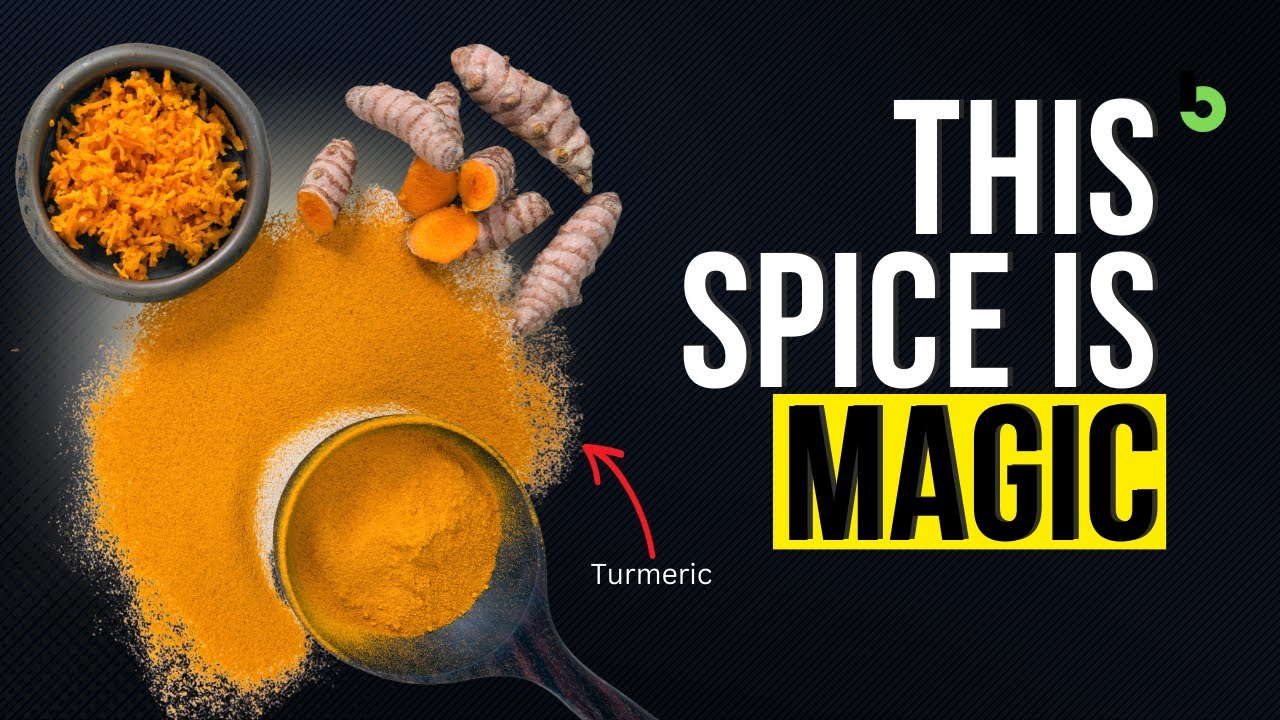
Source: ytimg.com
Turmeric, a vibrant spice prized for its potential health benefits, contains curcumin, a compound with antioxidant and anti-inflammatory properties. While generally considered safe, excessive consumption or certain interactions can pose risks. Understanding these precautions is crucial for maximizing turmeric’s potential while minimizing potential harm.Excessive turmeric consumption, while rare, can lead to some side effects. These include digestive issues like nausea, heartburn, and diarrhea.
Some individuals may experience skin reactions, such as rashes or itching. Liver problems have been linked to high doses in some cases, particularly in individuals with pre-existing liver conditions. It is important to note that these side effects are often dose-dependent and usually mild, resolving with reduced intake.
Turmeric’s got some serious healing power, and there are simple ways to maximize it. Adding it to your daily routine, like in smoothies or sprinkled on your morning eggs, is a great start. Speaking of powerful things, it’s important to separate fact from fiction, especially when it comes to financial claims. For example, did you know that Donald Trump didn’t actually get rich off the $TRUMP meme coin?
Check out this article to learn why Donald Trump Did Not Get Tens Of Billions Of Dollars Richer From $TRUMP Meme Coin—Here’s Why This isn’t to say that turmeric is a get-rich-quick scheme, but it is a powerful natural remedy when used correctly. So, next time you’re cooking, remember those simple tips for maximizing turmeric’s healing benefits.
Potential Side Effects of Excessive Consumption
Excessive turmeric consumption, while rare, can lead to various side effects. These include gastrointestinal issues such as nausea, heartburn, and diarrhea. Some individuals may experience skin reactions, such as rashes or itching. Liver problems have been linked to high doses in some cases, particularly in individuals with pre-existing liver conditions.
Interactions with Medications
Turmeric can interact with certain medications, impacting their effectiveness or increasing the risk of side effects. For instance, turmeric may interfere with blood-thinning medications like warfarin, potentially increasing bleeding risk. It can also affect the absorption of some drugs, leading to reduced efficacy. Similarly, turmeric might interact with diabetes medications, potentially impacting blood sugar control. It is essential to inform your doctor about any turmeric use, especially if you are taking other medications.
Contraindications for Specific Populations
Certain populations might have contraindications for turmeric use. For example, individuals with pre-existing liver conditions should use caution, as high doses might exacerbate existing issues. Pregnant or breastfeeding women should consult their healthcare provider before using turmeric, as there is limited research on its safety in these populations. Those with bleeding disorders should also exercise caution, given potential interactions with blood-thinning medications.
Want to unlock turmeric’s full healing potential? Beyond its internal benefits, turmeric can work wonders on your skin and hair. Check out how it’s the secret to glowing skin and healthy hair in this insightful article Why Turmeric Is the Secret to Glowing Skin and Healthy Hair. Now, back to the basics: start by incorporating turmeric into your diet in simple ways like adding it to smoothies or curries.
Pairing it with black pepper enhances absorption, maximizing its healing powers.
Importance of Professional Consultation
Before using turmeric for specific health conditions, it is crucial to consult with a healthcare professional. This is especially important for individuals with pre-existing medical conditions, such as diabetes, bleeding disorders, or liver disease. A healthcare professional can assess your individual needs and determine if turmeric is appropriate for you. They can also provide guidance on appropriate dosage and potential interactions with other medications.
Cautions and Warnings, Simple Tips for Maximizing Turmeric’s Healing Properties
- Consult your doctor before using turmeric if you are pregnant, breastfeeding, or have pre-existing health conditions, including liver problems, diabetes, or bleeding disorders.
- Avoid using turmeric with blood-thinning medications like warfarin without consulting your doctor.
- Start with a low dose of turmeric and gradually increase it as tolerated, monitoring for any adverse effects.
- Be cautious about consuming large amounts of turmeric, as it can cause gastrointestinal issues such as nausea, heartburn, and diarrhea.
- Report any unusual symptoms or side effects to your doctor immediately.
Understanding Turmeric Supplements
Turmeric supplements have become increasingly popular due to the purported health benefits of curcumin, the active compound in turmeric. However, the supplement market can be confusing, with varying quality and potency. Understanding the different forms, quality considerations, and potential benefits and risks is crucial for making informed choices.Choosing the right turmeric supplement is not just about finding a product; it’s about selecting a supplement that aligns with your health goals and dietary needs.
Careful consideration of factors like curcumin content, potential side effects, and overall safety is essential.
Different Forms of Turmeric Supplements
Turmeric supplements come in various forms, each with its own absorption characteristics. Understanding these differences can help you choose the most suitable option. Common forms include turmeric extracts, curcuminoids, and curcumin supplements. Turmeric extracts are standardized extracts of turmeric root, containing varying levels of curcuminoids. Curcuminoids are the bioactive compounds within turmeric, primarily curcumin.
Curcumin supplements are a concentrated form of curcumin, often with added ingredients to improve absorption.
Quality and Safety of Turmeric Supplements
The quality and safety of turmeric supplements can vary significantly. Factors like the source of the turmeric, the manufacturing process, and the purity of the curcumin content influence the effectiveness and safety of the supplement. Reliable sources, such as reputable manufacturers, independent testing results, and third-party certifications, are key indicators of quality. Look for supplements with certifications like NSF or GMP to ensure quality control.
Checking Labels and Ingredients
Careful examination of the supplement label is essential. Look for the percentage of curcuminoids, specifically curcumin, and other ingredients. Also, note the dosage per serving. The quality and safety of turmeric supplements hinge on the accurate labeling of their ingredients. This transparency helps consumers to choose a supplement that aligns with their needs and expectations.
Choosing a High-Quality Turmeric Supplement
Selecting a high-quality turmeric supplement involves considering several factors. Look for supplements with a clear, detailed label that specifies the curcumin content, the source of the turmeric, and any added ingredients. Independent lab testing results, certifications, and reputable manufacturers are additional indicators of high quality. Researching reviews and testimonials from other users can also provide valuable insight.
Supplement Comparison Table
| Supplement Type | Curcumin Content | Potential Benefits | Possible Side Effects |
|---|---|---|---|
| Turmeric Extract | Variable; depends on standardization | Anti-inflammatory, antioxidant properties | Mild gastrointestinal discomfort in some individuals |
| Curcuminoids | High concentration of curcuminoids | Joint health, cognitive function support | Potential for mild digestive upset, in some cases |
| Curcumin Supplements | High curcumin content; often with absorption enhancers | Improved bioavailability of curcumin | Potential for mild digestive discomfort; interactions with medications are possible |
| Turmeric Root Powder | Lower curcumin content compared to extracts | Anti-inflammatory properties | May not be as easily absorbed as other forms; more of the product needed for same effect |
Lifestyle Factors for Optimal Turmeric Benefits
Turmeric’s potent healing properties are not just about the spice itself; your overall lifestyle plays a crucial role in how your body absorbs and utilizes its beneficial compounds. Understanding how various lifestyle choices impact turmeric’s effectiveness is key to maximizing its health advantages. This section explores the significant interplay between lifestyle factors and turmeric’s potential.Turmeric’s active component, curcumin, needs optimal conditions for absorption and utilization.
Factors like diet, exercise, stress levels, sleep, and hydration can either enhance or hinder curcumin’s effectiveness. A supportive lifestyle allows your body to best harness turmeric’s potential, while unfavorable habits can limit its benefits.
Balanced Diet and Regular Exercise
A balanced diet rich in antioxidants and vitamins supports overall health and aids in curcumin absorption. Regular exercise enhances blood circulation, potentially improving the delivery of curcumin to target areas. These factors synergistically contribute to turmeric’s effectiveness.
Impact of Stress and Sleep Quality
Chronic stress and inadequate sleep can negatively influence the body’s ability to absorb and utilize curcumin. Stress hormones can interfere with the digestive process, and poor sleep can disrupt cellular repair mechanisms, both crucial for optimal curcumin absorption. Maintaining a healthy stress management routine and prioritizing sleep quality are vital for maximizing turmeric’s benefits.
Role of Hydration in Supporting Turmeric’s Benefits
Proper hydration is essential for overall bodily functions, including digestion and nutrient absorption. Adequate water intake can help facilitate the movement of curcumin through the digestive system, enhancing its bioavailability. Staying well-hydrated supports turmeric’s potential to promote well-being.
Lifestyle Factors Affecting Turmeric Benefits
| Lifestyle Factor | Impact on Turmeric | Recommendations | Examples |
|---|---|---|---|
| Balanced Diet | Enhances curcumin absorption and utilization by providing essential nutrients and antioxidants. | Consume a diet rich in fruits, vegetables, and healthy fats. Limit processed foods, sugary drinks, and excessive saturated fats. | Include foods like leafy greens, berries, and nuts in your daily diet. |
| Regular Exercise | Improves blood circulation, potentially enhancing curcumin delivery to target tissues. | Aim for at least 150 minutes of moderate-intensity or 75 minutes of vigorous-intensity aerobic activity per week. | Engage in activities like brisk walking, jogging, swimming, or cycling. |
| Stress Management | Chronic stress can hinder curcumin absorption. | Practice stress-reducing techniques like meditation, deep breathing exercises, yoga, or spending time in nature. | Engage in mindfulness practices or take breaks throughout the day to relax. |
| Sleep Quality | Poor sleep quality can disrupt cellular repair mechanisms, affecting curcumin utilization. | Prioritize 7-9 hours of quality sleep per night. Establish a consistent sleep schedule. Create a relaxing bedtime routine. | Ensure a dark, quiet, and cool sleep environment. Avoid caffeine and alcohol before bed. |
| Hydration | Adequate water intake facilitates curcumin movement through the digestive system, enhancing its bioavailability. | Drink plenty of water throughout the day. | Carry a reusable water bottle and aim for 8 glasses of water daily. |
Closing Summary
In conclusion, harnessing turmeric’s healing properties requires a holistic approach. By understanding its composition, exploring diverse preparation methods, and carefully considering potential side effects, you can unlock the full potential of this remarkable spice. Remember, consulting with a healthcare professional is crucial before incorporating turmeric into your routine, especially if you have existing health conditions or are taking other medications.
Ultimately, this exploration of turmeric provides a practical and insightful guide for safely and effectively maximizing its potential health benefits.
Essential Questionnaire
What is the ideal daily intake of turmeric for general health?
There’s no single recommended daily intake. The optimal amount depends on individual needs and health goals. Consulting a healthcare professional for personalized advice is always recommended.
Can turmeric interact with medications?
Yes, turmeric can interact with certain medications, potentially affecting their effectiveness or increasing the risk of side effects. Always consult your doctor before using turmeric if you are taking any medications.
Are there specific populations for which turmeric use is contraindicated?
Pregnant or breastfeeding women, individuals with specific medical conditions, or those taking blood-thinning medications should consult their doctor before using turmeric. It’s crucial to prioritize safety and discuss potential risks with a healthcare professional.
What are some simple ways to incorporate turmeric into my diet?
Turmeric can be added to curries, stir-fries, smoothies, or even used as a spice in everyday dishes. Experiment with different recipes to find ways to enjoy turmeric that work best for you.

